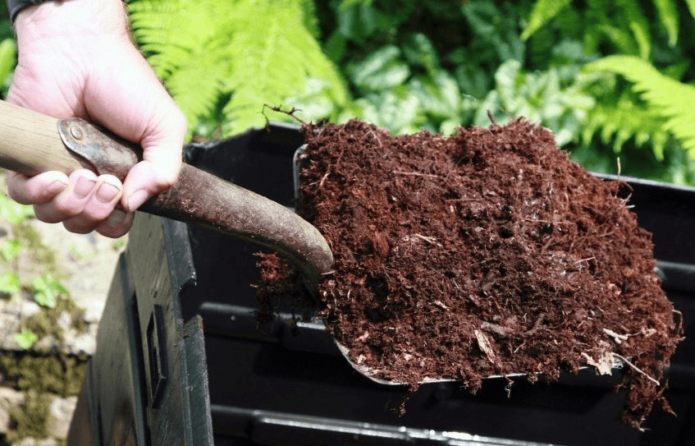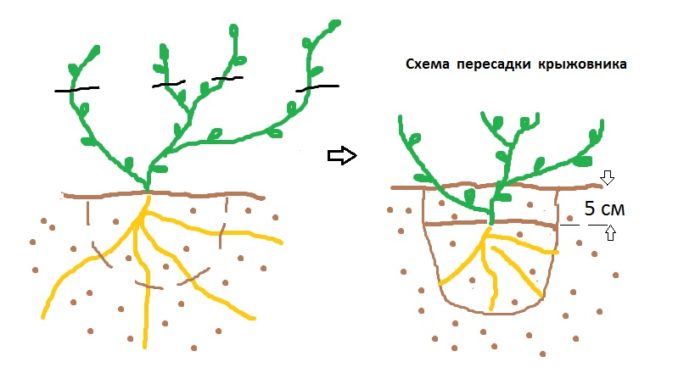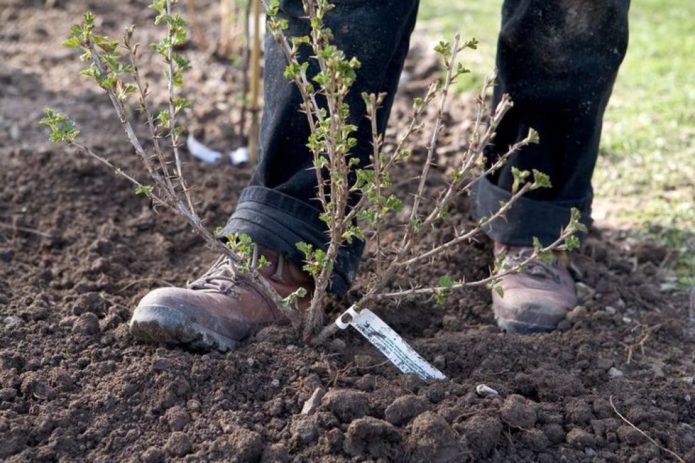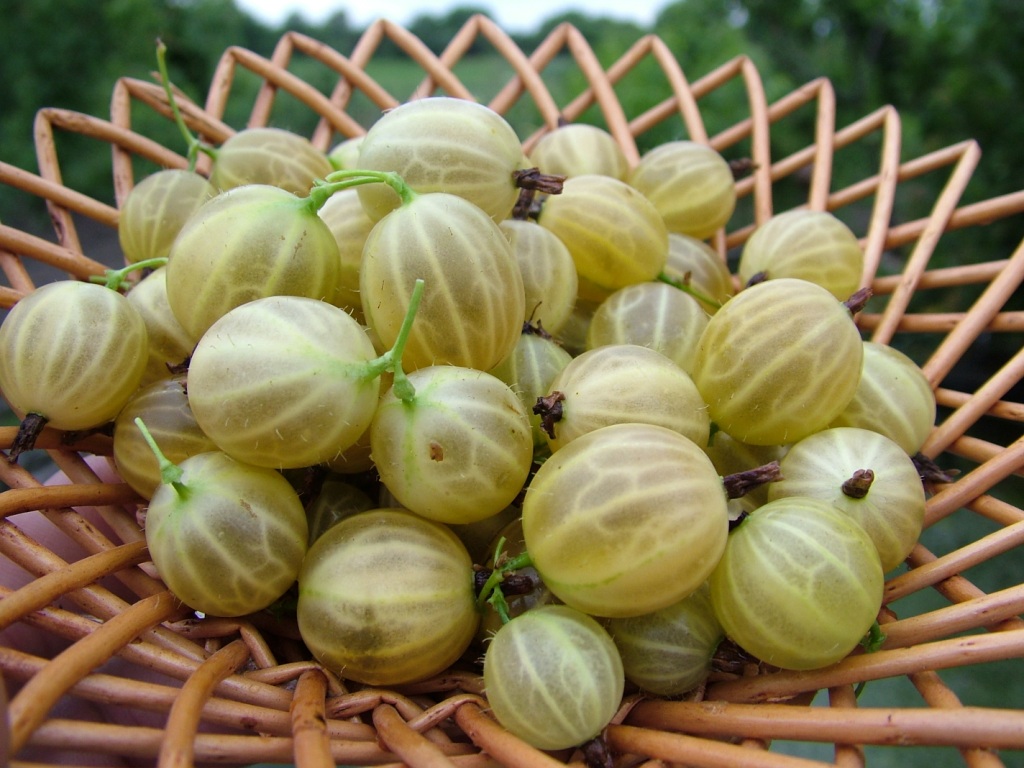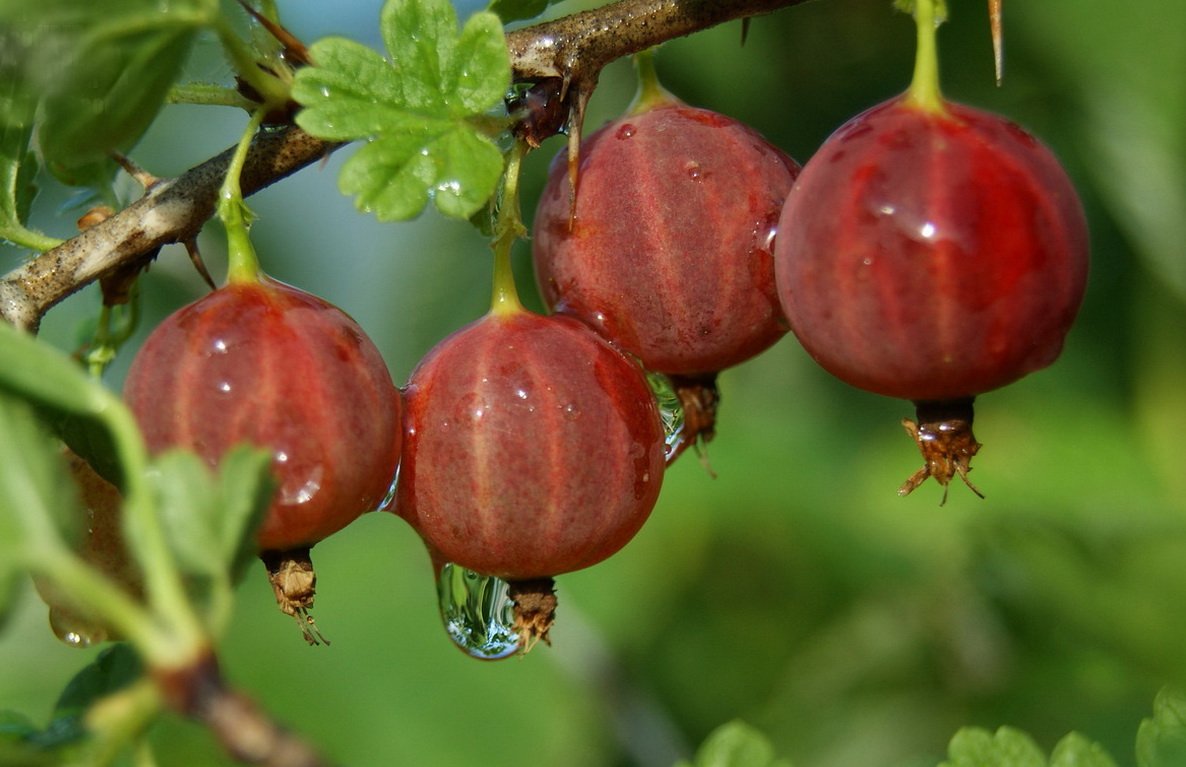Gooseberry is an unpretentious berry bush. It happens that the bush grows so much that it begins to interfere with other crops. We have to find a new place for him and transplant. Of course, the younger the bush, the easier the operation, but in general, the gooseberry transplant is nothing complicated.
Content
Gooseberry transplant reasons
Among the possible reasons for the need for a gooseberry transplant, the following can be noted:
- a serious redevelopment of the site was required;
- the bushes are too overgrown and interfere with each other;
- the gooseberry was originally planted in a hurry, not in the optimal place: it does not have enough sun, it is flooded with melt water, etc.;
- it is inconvenient to harvest: a fence located too close interferes, branches spread along the paths, etc.
The sooner these reasons are discovered, the better: transplanting gooseberries at the age of 3-5 is very simple, and later difficulties are possible. Firstly, it is physically difficult to transplant a massive bush, and secondly, it will be more difficult to take root in a new place.
Gooseberry transplant conditions and optimal timing
Like the vast majority of shrubs, gooseberries can be replanted in both spring and fall. In summer, this is not worth doing, although young bushes with a large clod of earth can be moved at any time; with proper operation and good care, they are likely to take root. An autumn transplant is considered easier and more reliable, when the bush enters a period of relative dormancy and prepares for winter.
The exact timing of transplanting depends on the region and the weather, but usually this time falls in October, after the leaves fall. This should be done 3-4 weeks before the onset of severe frosts, so that the roots in a new place begin to take root and resume growth even in relatively warm weather. However, it happens that in the fall it was not possible to transplant the bush: unexpectedly early frosts came or the gardener simply had no time. In this case, the procedure can be postponed for the spring, but the planting site should be prepared in the fall.
Spring is not the best time to transplant gooseberries, because they wake up early from hibernation, when it is still difficult to work with the land. With the arrival of relative heat, its buds swell, open, and the growing season begins. A transplant with the beginning of sap flow will be very painful, and the death of a bush in a new place is possible, therefore, in most regions, the spring operation should be carried out in March, and in a cold climate - in early April.
Gooseberry transplant technology
You can transplant gooseberries with or without a lump of earth. Transplanting with a lump is more difficult, but the bush will take root faster and more reliably.It is especially important to preserve the roots with the soil if the situation is “on the verge” in terms of transplantation: the gooseberry has not yet passed into dormancy in the fall, and in the spring its buds began to swell. A spring transplant without a lump of earth can be carried out only as a last resort and only for a young bush (no older than 2-3 years) with a powerful root system. After such an operation, caring for gooseberries in a new place should be especially careful.
Preparing the landing pit in a new location
The landing site must meet the following requirements:
- be well lit (partial shade is allowed for several hours a day);
- be protected from drafts: as a rule, they try to plant gooseberries near a fence or low buildings;
- there should be no close occurrence of groundwater; the plant needs moist soil, but it does not tolerate waterlogging;
- the soil should be light, fertile, with a neutral reaction of the environment; excess acidity is corrected with slaked lime, chalk or dolomite flour, sand and peat are added to the clay soil.
Do not plant gooseberries in the place where raspberries or currants grew shortly before.
The procedure for preparing the site for landing:
- The selected area, long before planting, is carefully freed from weeds and plant debris by digging it onto a shovel bayonet.
- 2-3 weeks before the transplant, a planting hole is dug (if the procedure is scheduled for spring, the hole should be dug in the fall, at any time). The size of the pit depends on the size of the transplanted bush, but its depth should be at least 50 cm. It is not known in advance exactly what the diameter of the earthen coma with roots will be, so it is estimated approximately. The diameter of the planting hole should be twice as large.
- If the site is problematic from the point of view of the accumulation of melt water, a drainage layer of 10-15 cm, consisting of pebbles, rubble or just coarse sand, should be placed on the bottom.
- The removed soil (its upper, fertile layer) is mixed with compost or humus, hoping that at least a bucket of organic fertilizer will fall on the bush, then a liter can of wood ash is added to the mixture.
- The lowest, clayey layer is removed from the site.
Mineral fertilizers, as a rule, are not applied to the pit, but 100 g of superphosphate can be added by placing it away from future roots, that is, mixed with the ground and poured over the drainage layer.
Preparing a gooseberry bush for transplant
The procedure for preparing gooseberries:
- Whatever the transplanted bush, it must be cut so that the state of the root system after digging corresponds to the aboveground part, and the roots can feed the shoots. All broken, old, thickening branches are cut out completely, and healthy ones are shortened. On annual branches, no more than 7-8 buds are left, and if the bush is very large, such branches are cut in half.
- After that, the plant is dug in from all sides. Gooseberry roots are capable of spreading to the sides over considerable distances, so even a young bush needs to be dug, stepping back at least 30-40 cm from the center of the bush. If the roots grow further, they can be chopped.
- Having dug in the bush, it is carefully removed from the hole and placed on burlap or thick plastic wrap. It is transported to a new place in any convenient way. If damaged roots stick out of the coma, they are cut to healthy wood.
Planting a bush in a new place
The transplant is carried out as follows:
- The transplanted bush is transferred to the planting pit and the height of the earthen coma is measured. Compare it with the depth of the prepared pit. If the pit is significantly deeper than the height of the lump, soil mixed with fertilizers is poured onto the bottom.It is necessary to make sure that when the bush is placed in the planting hole, it is approximately at the same level as before the transplant. It is desirable to deepen it by a maximum of 3-5 cm.
- A transplanted bush with a lump of earth is installed in the pit. The cavities that remained free are gradually covered with fertile soil, periodically tamping it down with your foot.
- Pour at least 2-3 buckets of water under the bush, allowing it to be absorbed. Sprinkle the soil with dry earth, or better - with a thick layer of humus or peat.
If several gooseberry bushes are transplanted at once, a planting scheme is selected in advance. In case of mass transfer, the distance between the centers of the planting holes should be 1.5–2.0 m; when planting in several rows, a free passage is provided between them.
Caring for a transplanted gooseberry bush
The gooseberry is quite unpretentious; with a properly performed transplant, the bush successfully takes root. To help him in this, it is important to water him intensively in the first year and be sure to mulch the soil around him, as well as weed weeds. A 6–8 cm layer of mulch inhibits the growth of most weeds. When especially strong species appear (wheatgrass, dandelion, etc.), they must be manually removed by the root, since they compete for nutrition and moisture in a weakened bush transplant.
In dry weather, the transplanted bush is watered until mid-summer 2 times a week, spending at least a bucket of water. In especially hot weather, sprinkling is also useful: wetting the crown with water. In the second half of summer, watering is carried out less often. The water temperature is not significant, but watering should be done in the morning or evening.
In the middle of summer, it is worth feeding the gooseberry with potash fertilizer. If the branches grow poorly, it is better to do this a little earlier by taking a complex mineral fertilizer. The transplanted gooseberry must be fertilized closer to winter, at the same time carrying out water-charging irrigation. After leaf fall, 4–5 buckets of water are introduced under the bush, diluting up to 100 g of superphosphate in it. After that, the soil around the bush is covered with fallen leaves of trees or sawdust with a layer of up to 10 cm. The gooseberry does not require additional warming of the crown for the winter.
Features of transplanting gooseberries at different times of the year
There is no significant difference in the technology of spring and autumn gooseberry transplantation. A pit for an autumn transplant is prepared 2-3 weeks before it, and for a spring one - from autumn. Nuances may appear during subsequent care, and they depend on the current weather.
Autumn gooseberry transplant
With an autumn transplant, as a rule, frequent watering is not required until the onset of winter, since most often it rains in October-November and there is no heat. A thick layer of mulch (up to 10 cm), which is required after transplanting, successfully retains irrigation water, therefore repeated frequent watering is required only in case of dry weather. In normal weather, it may be sufficient to repeat watering a week after transplanting.
Top dressing during the autumn transplant is not required, it is carried out already next year. For the first time, until spring, cover the soil under the bush with a piece of roofing material: it prevents the evaporation of water and warms the earth. But if it is a dry autumn, the roofing material must be periodically raised, the soil moisture checked and, if necessary, irrigated.
Video: transplanting gooseberries in the fall
Spring gooseberry transplant
During spring transplantation, soil mulching is also carried out, but not in such a thick layer, otherwise the deepening of the root collar will be excessive. Watering is carried out often, since the snow water in the soil runs out very quickly.After the leaves bloom, the bush is watered weekly, and after 2-3 weeks after that it can already be fed with nitrogen fertilizer (urea, mullein or chicken manure infusion).
Video: forced transplant of gooseberries in spring
A gooseberry transplant is a simple operation that may be required for various reasons. It is important not only to do it correctly, but also not to miss the deadline: it is best to do the transplant in the fall, and if you have to do it in the spring, then you need to finish the procedure as early as possible.


